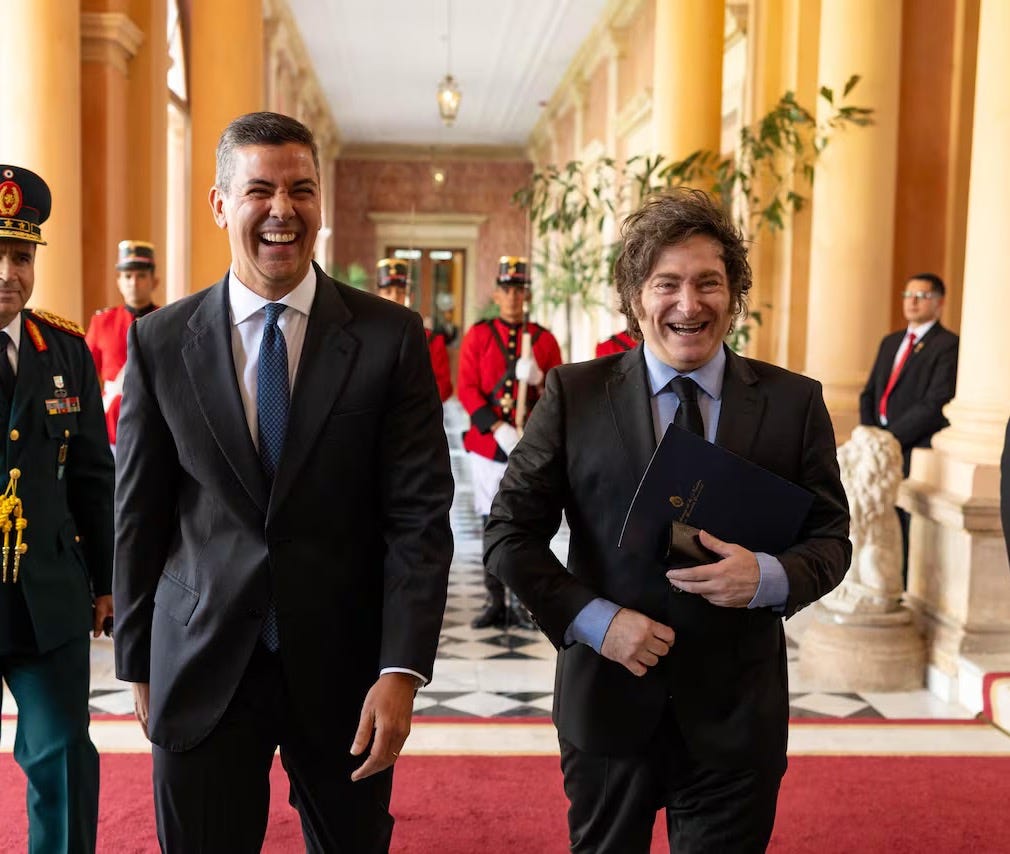Paraguay’s Economy: Model or Mirage?
Despite praise from Milei, growth is failing to reach everyone.

Visiting Asunción for last week’s Conservative Political Action Conference (CPAC), Argentine President Javier Milei singled out low-tax, high-growth Paraguay as an “example of what should be done” in all of South America’s economies.
But the so-called Paraguayan miracle comes with a sting in the tail: rising food insecurity, high labour informality, declining purchasing power for workers, and fragile gains mainly benefitting the wealthiest.
To explore by the reality behind the Paraguayan model — presented by some of the continent’s most conservative sectors as a beacon for the continent — The Paraguay Post spoke with Rodrigo Ibarrola, an economist with local think-tank CADEP.
He delved into the reasons why investors are steering clear, how the Central Bank is keeping the guaraní artificially high: and why all the self-help speeches in the world won’t be enough to bring lasting prosperity to Paraguay.
The Paraguay Post (TPP): Why is there a perception among the general public that a strong macroeconomic performance isn’t translating into improved quality of life in Paraguay?
Rodrigo Ibarrola (RI): To put things in context, Paraguay experienced significant growth from the early 2000s onward, after emerging from a delicate situation, including a selective default. The starting point was low — back then, around 50% of the population lived in poverty. Following the reforms of the Nicanor Duarte Frutos administration (2003–2008), Paraguay began to grow, driven by Chinese demand for commodities, as was the case throughout the region.
Keep reading with a 7-day free trial
Subscribe to The Paraguay Post to keep reading this post and get 7 days of free access to the full post archives.


